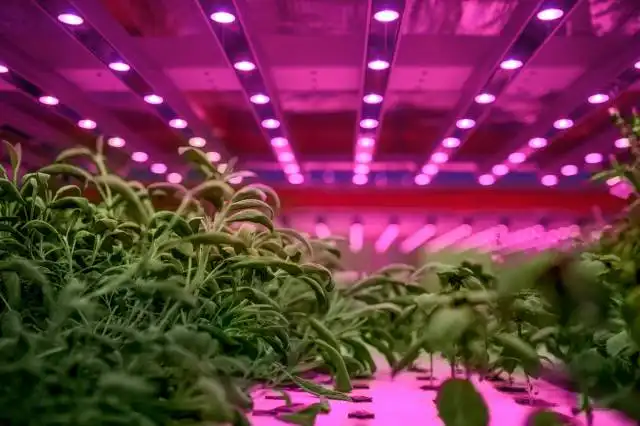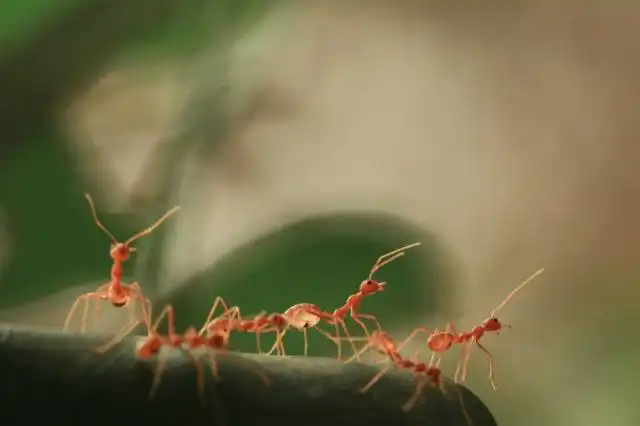Start a Mushroom Farm
Cultivating Your Own Edible Gold: Unleashing the Mushroom Maven Within
| Updated


MUSHROOM FARM
Welcome to the fun-gi industry! A mushroom farm is a perfect venture for the entrepreneur with a green thumb and a taste for the culinary exotic. You'll be spending your days cultivating a variety of delicious and desirable fungi, from Portobello to Shiitake. It's not just a farm - think of it as a dream field where you're more of a mycologist commanding the forest floor, turning spores into edible gold!
Jump to Business Plan
RELATED BUSINESS IDEAS
Browse ALL Sustainability & Eco-Friendly Initiatives Business Ideas
Discover Your Perfect Domain
Unlock the door to your online success with our hand-picked selection of premium domain names. Whether you're starting a new venture or rebranding an existing one, the right domain can set the tone for your digital presence. Browse through our curated list, each with its unique potential to enhance your brand's visibility and credibility.
MUSHROOM FARM MINI BUSINESS PLAN
This a quick reality check to help you identify the strengths and weaknesses of your business concept before you dive in.
Business Idea: Mushroom Farm
Expected Percent Margin:
- Gross Margin: 40-60%
- Net Profit Margin: 20-30%
Earnings Expectations:
- Daily Earnings: $100 - $300
- Weekly Earnings: $700 - $2,100
- Monthly Earnings: $3,000 - $9,000
- Annual Earnings: $36,000 - $108,000
Actions to Hit Those Numbers:
Initial Setup and Ongoing Operations:
- Farming Land: Start with a small land, expand as the business grows. An indoor mushroom farm also an option.
- Initial Investment: Estimated $10,000-$20,000 for the initial setup (may vary).
- Spawning and Care: Buy high-quality spawns and maintain appropriate temperature, humidity, and lighting.
Marketing and Sales:
- Direct Sales: Selling in local farmers markets, restaurants, and grocery stores.
- Online Sales: Create an online store to sell and ship mushrooms to a broader market.
Cost Control:
- Utilities and Maintenance: Efficient use of resources like water, electricity, and labor to lower costs.
Regulatory Compliance:
- Permits and Licenses: Get the necessary permissions and adhere to agricultural regulations/standards.
Staffing:
- Hiring: Initially, you may handle the operations with family members or hire 1-2 employees as needed.
These figures are rough estimates and can differ based on location, type of mushrooms, and sales channels. It is always advisable to get personalised advice from a financial advisor or agricultural extension service.
NOT WHAT YOU HAD IN MIND? Here are more ideas



Browse ALL Sustainability & Eco-Friendly Initiatives Business Ideas
Grab Your Business Website Name
Before you get caught up in the whirlwind of setting up your business, invest in a domain name. It's a small but significant step that lays the foundation for your brand and makes it easier for customers to find and trust you. Just like you wouldn't build a house without securing the land first, don't build a business without securing your domain name.
"Why? Can't that wait?" Here's why it shouldn't
Step 1: Determine if Starting a Mushroom Farm is Right for You
Breakdown of Startup Expenses
Starting a mushroom farm requires a significant amount of upfront capital. Before beginning the process, it is important to determine the total cost of the startup expenses. These expenses can include the cost of the land, the cost of the building and equipment, the cost of the mushroom spawn, and the cost of labor. Additionally, it is important to factor in the cost of marketing and advertising to ensure that the business is successful.
Breakdown of Ongoing Expenses
Once the mushroom farm is up and running, there are ongoing expenses that must be taken into account. These expenses can include the cost of labor, the cost of supplies, the cost of marketing and advertising, and the cost of maintenance and repair. Additionally, it is important to factor in the cost of insurance to protect the business from any potential liabilities.
Examples of Ways to Make Money
There are several ways to make money from a mushroom farm. The most common way is to sell the mushrooms directly to customers. Additionally, the mushrooms can be sold to restaurants, grocery stores, and farmers markets. Additionally, the farm can offer tours, workshops, and other educational experiences to generate additional revenue. Finally, the farm can offer value-added products such as pickled mushrooms, dried mushrooms, and mushroom-infused oils and vinegars.
Step 2: Name the Business
Brainstorm When it comes to naming the business, it is important to brainstorm and come up with a few different ideas. Think of words that relate to the business, such as “mushroom”, “farm”, or “harvest”. Consider words that evoke a feeling or emotion, such as “fresh”, “green”, or “earthy”. It is also important to consider the target audience and the message the business wants to convey.
Research Once a few ideas have been brainstormed, it is important to research the names to make sure they are not already taken. This can be done by searching for the name on the internet or checking with the local government to make sure the name is not already registered.
Consider the Future When choosing a name for the business, it is important to consider the future. The name should be flexible enough to accommodate changes in the business, such as expanding to different types of mushrooms or adding other products.
Keep it Simple When choosing a name for the business, it is important to keep it simple. A name that is too long or complicated can be difficult to remember and can be confusing to customers.
Test it Out Once a few names have been chosen, it is important to test them out. Ask family and friends for their opinion and see which name resonates the most. This can help narrow down the choices and make the decision easier.
Step 3: Research the Mushroom Market
Identify the Target Market
Before starting a mushroom farm, it is important to identify the target market. This includes researching the types of mushrooms that are in demand, as well as the prices that they are selling for. Additionally, it is important to understand the customer base that is interested in purchasing mushrooms. For example, are they looking for fresh mushrooms to cook with, or are they looking for dried mushrooms to use in tea? Understanding the target market will help determine the types of mushrooms to grow and the prices that they can be sold for.
Analyze the Competition
It is also important to analyze the competition in the mushroom market. This includes researching the types of mushrooms that are being sold by other farms, as well as the prices that they are selling for. Additionally, it is important to understand the customer base that is being targeted by the competition. For example, are they targeting restaurants or grocery stores? Understanding the competition will help determine the types of mushrooms to grow and the prices that they can be sold for. Additionally, it will help to identify any potential gaps in the market that can be filled.
Step 4: Develop a Business Plan
Outline the Business Goals
Before developing a business plan, it is important to have a clear understanding of the goals of the business. This should include a breakdown of the short-term and long-term goals, as well as a timeline for when each goal should be achieved. Additionally, the business plan should include a detailed description of the services the business will provide, the target market, and the competitive advantages the business will have.
Detail the Financial Plan
The financial plan should include a breakdown of startup expenses and ongoing expenses. This should include the cost of any equipment or supplies needed to start the business, as well as the cost of labor and any other expenses associated with running the business. Additionally, the financial plan should include a breakdown of the expected revenue, as well as any potential sources of income. Examples of ways to make money from a mushroom farm include selling fresh mushrooms, selling dried mushrooms, and selling mushroom products such as sauces and seasonings.
Step 5: Secure Financing
Options for Financing
When starting a mushroom farm, there are a few options for financing. One option is to apply for a business loan from a bank or other financial institution. This loan can be used to cover startup costs, such as purchasing land, building a facility, and buying equipment. Another option is to seek out investors who are willing to invest in the business. Investors may provide capital in exchange for a share of the profits or a percentage of ownership. Finally, some mushroom farmers may be able to use their own personal savings to finance the business.
How to Apply for Financing
Applying for a business loan is a relatively straightforward process. The first step is to research different lenders and compare their loan terms and interest rates. Once you have identified the best loan option, you will need to fill out an application and submit it to the lender. The lender will then review your application and may require additional documents, such as a business plan or financial statements. Once the loan is approved, you can use the money to finance your mushroom farm.
Step 6: Find a Location
When choosing a location for a mushroom farm, there are several factors to consider. The first is the climate. The ideal climate for growing mushrooms is one that is cool and humid. The temperature should range between 55 and 70 degrees Fahrenheit, and the humidity should be between 80 and 90 percent. Additionally, the location should have access to a reliable water source and plenty of sunlight.
Types of Locations
Mushroom farms can be located in a variety of places. For example, some mushroom farmers choose to build their own facility, while others rent or purchase a pre-existing building. Additionally, some mushroom farms are located outdoors, while others are located in greenhouses. When selecting a location, it is important to consider the size of the farm, the cost of the facility, and the availability of resources.
Zoning Regulations
Before selecting a location, it is important to research local zoning regulations. Depending on the type of mushroom farm, certain permits and licenses may be required. Additionally, some municipalities have restrictions on the types of businesses that can be located in certain areas. It is important to research local regulations before selecting a location.
Cost of the Location
The cost of the location will vary depending on the type of facility and the size of the farm. For example, a pre-existing building may be more expensive than building a facility from scratch. Additionally, the cost of the land may vary depending on the location. When selecting a location, it is important to consider the cost of the facility and the cost of the land.
Step 7: Purchase Supplies and Equipment
The supplies and equipment needed to start a mushroom farm will vary depending on the type of mushrooms being grown. Generally, the supplies and equipment needed include a growing medium, such as straw, compost, or sawdust; containers to hold the growing medium; a humidifier; a fan; and a light source. Additionally, you may need to purchase a pressure cooker, a spore syringe, and a microscope.
Where to Purchase Supplies and Equipment
When it comes to purchasing the supplies and equipment needed to start a mushroom farm, you have several options. You can purchase the supplies and equipment from a local garden center or nursery, or you can purchase them online from a variety of online retailers. Additionally, you may be able to find used supplies and equipment at garage sales or online classifieds.
Cost of Supplies and Equipment
The cost of supplies and equipment for a mushroom farm will vary depending on the type of mushrooms being grown and the quality of the supplies and equipment. Generally, the cost of supplies and equipment can range from a few hundred dollars to a few thousand dollars. Additionally, you may need to purchase additional supplies and equipment as your business grows.
Tips for Purchasing Supplies and Equipment
When purchasing supplies and equipment for a mushroom farm, it is important to do your research. Make sure to compare prices and read reviews to ensure that you are getting the best quality supplies and equipment for the best price. Additionally, it is important to purchase supplies and equipment that are designed specifically for mushroom farming, as they will be more efficient and effective.
Step 8: Market the Business
Once the mushroom farm is up and running, it is important to market the business to potential customers. There are several strategies that can be used to market the business. First, it is important to create a website for the business. This website should include information about the business, the types of mushrooms available, and contact information. Additionally, it is important to create social media accounts for the business. This will allow the business to reach a larger audience and increase visibility. It is also important to create a logo for the business. This logo should be used on all marketing materials, such as business cards, flyers, and brochures. Finally, it is important to create relationships with local restaurants and grocery stores. This will allow the business to reach a larger customer base.
Step 9: Monitor the Business
Tips for Monitoring the Business
Once the mushroom farm is up and running, it is important to monitor the business to ensure that it is successful. First, it is important to track the sales of the business. This will allow the business to identify any areas that need improvement. Additionally, it is important to track the expenses of the business. This will help the business to stay within budget and maximize profits. It is also important to track customer feedback. This will allow the business to identify any areas that need improvement and ensure that customers are satisfied. Finally, it is important to track the growth of the business. This will allow the business to identify any areas that need improvement and ensure that the business is growing.
Step 9: Start Growing Mushrooms
How to Prepare the Growing Environment
Before you can start growing mushrooms, you need to create the ideal environment for them to thrive. This includes selecting the right substrate, such as straw, wood chips, or compost. You'll also need to provide the mushrooms with the right temperature, humidity, and light. You'll need to make sure the environment is free from contaminants and pests, as well as provide the mushrooms with the right amount of water and nutrients.
How to Care for the Mushrooms
Once the mushrooms have been planted, you'll need to provide them with the right amount of care. This includes monitoring the temperature, humidity, and light levels, as well as providing the mushrooms with the right amount of water and nutrients. You'll also need to regularly check for pests and contaminants, and take steps to control them if necessary. Additionally, you'll need to harvest the mushrooms at the right time to ensure they are of the highest quality.
EXPLORE MORE CATEGORIES
Browse ALL Business Idea Categories
TAKE THE NEXT STEPS










